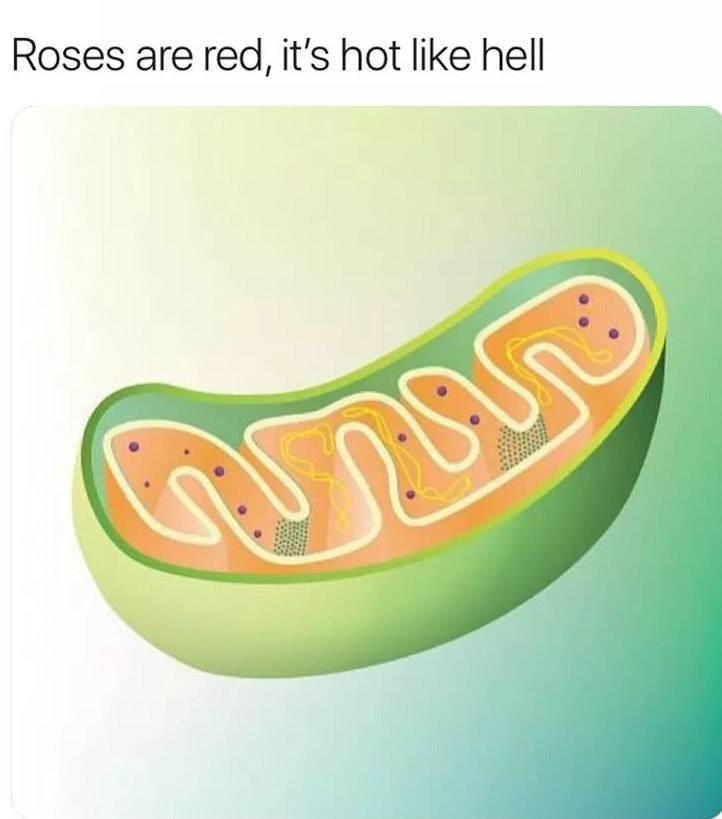- cross-posted to:
- jingszo
- cross-posted to:
- jingszo
Primary endosymbiosis happens when one microbial organism engulfs another. It then begins to use the swallowed organisms as an internal organ. The host provides the organism–now called an endosymbiont–several benefits including nutrients, energy, and protection. When it can no longer survive on its own, the engulfed endosymbiont becomes an organ for the host called an organelle.
“It’s very rare that organelles arise from these types of things,” Tyler Coale, a co-author of the Cell study and a postdoctoral scholar at the University of California, Santa Cruz said in a statement. “The first time we think it happened, it gave rise to all complex life.”
Endosymbiosis where the host life form becomes fundamental to another organism’s function has only happened three known times. All of these instances were a major breakthroughs for evolution, since merging with their hosts became fundamental for the endosymbionts very existence.
I knew it from the headline, but they did in fact say the thing:
The first event was roughly 2.2 billion years ago. This is when a single-celled organism called archaea swallowed up a bacterium that eventually became the mitochondria. This specialized organelle is what every biology student learns is the “powerhouse of the cell” and its formation allowed for complex organisms to evolve.

They said the thing! 🤩
The Tuvix-ing has begun.
Oh, I have another:
For the first time in one billion years, two lifeforms truly merged into one organism

Don’t worry, they haven’t invented the transporter yet, and there’s plenty of coffee.

I wonder what utility such algae may bring. It’s certainly very interesting!
It’s fusion, Steven! FUSION!
Fusion dance?
The team believes that this indicates that UCYN-A can be considered a full organelle. They gave it the name “nitroplast,” and it potentially began to evolve around 100 million years ago.
Ok, nice, but of course they didn’t prove that such things did not evolve 1 million more times in nature (in the last billion years) … and that scientists have still to discover.
That’s not exactly how this works…
Like, I’m assuming you mean it happened but died out, but because what we’re talking about is insanely small, if it happens once, it’s happens all around it at roughly the same time. And it’s not a question of if it’s more efficient than alone, it will be more efficient and out co.oete it’s separate components.
That’s not the barrier to entry. The barrier is two compatible things finding each other. An extreme change like this can’t be selected for.
It’s literally a freak chance that it can even happen. Which is why it’s so infrequent
an extreme change like this can’t be selected for
I think you mean that the initial bit - where the smaller bacterium is swallowed but stays alive in its host - is the “can’t be selected for”. After this, if the chimera survives, then most definitely the natural selection process is in action and selection is taking place.
What I really want to know is how it produces offspring that also has both parts. Neither one’s DNA has code for the other. And even if both reproduce asexually with plain old binary fission cell division, how do you get both to divide at the same time, and give each cell one of the new organelles?
Sorry for taking a long time to reply.
with plain old binary fission cell division, how do you get both to divide at the same time, and give each cell one of the new organelles?
An excellent question! Luckily it was answered in the paper. The researchers actually had a high resolution soft x-ray movie of cell division (ok, an exaggeration, they had a few micrographs showing the sequence). In the sequence, it showed how the organelles (including the novel N2 fixation one) undergoing division and each ‘child’ organelle ending up in different halves.
Cell division is controlled in the cell by an amazing process:
- 2 centres are created on opposite sides of the cell
- Structures like tethers are built that connect each centre to each of the organelles (the nucleus, mitochondria and the N2 fixators). These are called microtubules
- The microtubules then start shortening, pulling the organelles in two directions, separating them.
The x-ray micrographs show that the N2 fixators are already integrated into this mitosis mechanism - my guess is that the N2 fixators already ‘understand’ the parent cell’s mitosis signaling.
The authors also say that the organelles have lost a number of genes for essential cellular functions, relying on the parent cell to provide those capabilities. By comparison, mitochondria have only 37 genes left, and chloroplasts weren’t known for having any DNA when I was at school, but are now known to have about 110 genes.
In other words, a lot of evolution has already occurred and they are well on the way to being ‘proper’ organelles.
They aren’t trying to. This is the first time it’s been observed happening.
If not, then the article misrepresented. The title is completely clear on claiming it hasn’t happened in a billion years.
For the first time in one billion years, two lifeforms truly merged into one organism
Yeah well it’s from an outlet literally named “popular science”. If you want accuracy, read the actual papers.
Now, a team of scientists have detected a sign of a major life event that has likely not occurred for at least one billion years.
The headlines aren’t written by the journalists.
When your best friend gets married and disappears into the relationship.

I ship these two.











